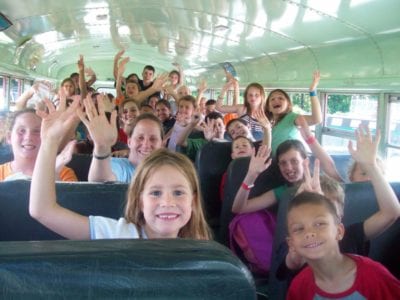 The ages for Jr. Church is a very important consideration as it will have an impact on the effectiveness of the program. This is also where many Churches suffer because of a lack of trained volunteers or Pastors willing to serve in this capacity.
The ages for Jr. Church is a very important consideration as it will have an impact on the effectiveness of the program. This is also where many Churches suffer because of a lack of trained volunteers or Pastors willing to serve in this capacity.
3 Ideal Ages
4 to 8 – This age is where a child is moving from a nursery experience to one of sitting still and a basic understanding of Church.
8 to 12 – This age is where a child practices those things learned and begins to experience a closer sanctuary experience.
13 to 17 – This is an opportunity to practice those things learned previously and starts to understand why.
3 Stages
Each stage builds off the success of the other and each has their purpose. The leadership of each age group should meet regularly to fulfill a preset plan of development so that a child is well prepared for a sanctuary service.
Stage 1 – Stage 1 is indeed a challenge. You need a man willing to deal with kids that are still learning to behave, obey and understand direction. You should have one volunteer per 3-5 kids, if possible, because there will be several bathroom breaks, activities and issues to deal with. The lessons should be interactive; addressing the fundamentals of faith and obedience, by definition.
Stage 2 – Stage 2 is where you are “hopefully” receiving a group of kids that have been taught to behave, obey and sit still. You will need a man that is apt to preach and teach, as well as, a mindset to counseling techniques. This age group will begin to deal with social pressures that may need to be addressed from the pulpit or in a counseling session.
The lessons should be informative; addressing the fundamentals of faith and obedience, in practice.
Stage 3 – Stage 3 is where you get to put into place the lessons learned in the previous 2 stages. This is usually the man who is in charge of the Jr. Church program (but it doesn’t need to be). He should, have the all the attributes of the Pastor as, depending on the size, he can easily have 30 or more people in the service that will require follow-up, outside ministering and development of the membership. The sermons should be probative ; addressing the fundamentals of faith and obedience, in understanding.
 What to do with kids who do not come up through these stages.
What to do with kids who do not come up through these stages.
Every church deals with the continual influx of people who come in at a certain age, missing part of these fundamentals; even adults. Much of the Modern Church Movements are trying to work with a generation that never learned the fundamentals of faith, so they just ignore them. This is a dangerous pattern to establish.
Each stage should have a few workers trained to deal with those who come into the church without the previous foundational elements. Do not make the assumption that they will just “pick up on them as they go along”. This will establish poor habits and create a fragmented picture of understanding as they continue. To help with this you might use a pattern of “cycled learning”.

 What to do with kids who do not come up through these stages.
What to do with kids who do not come up through these stages.